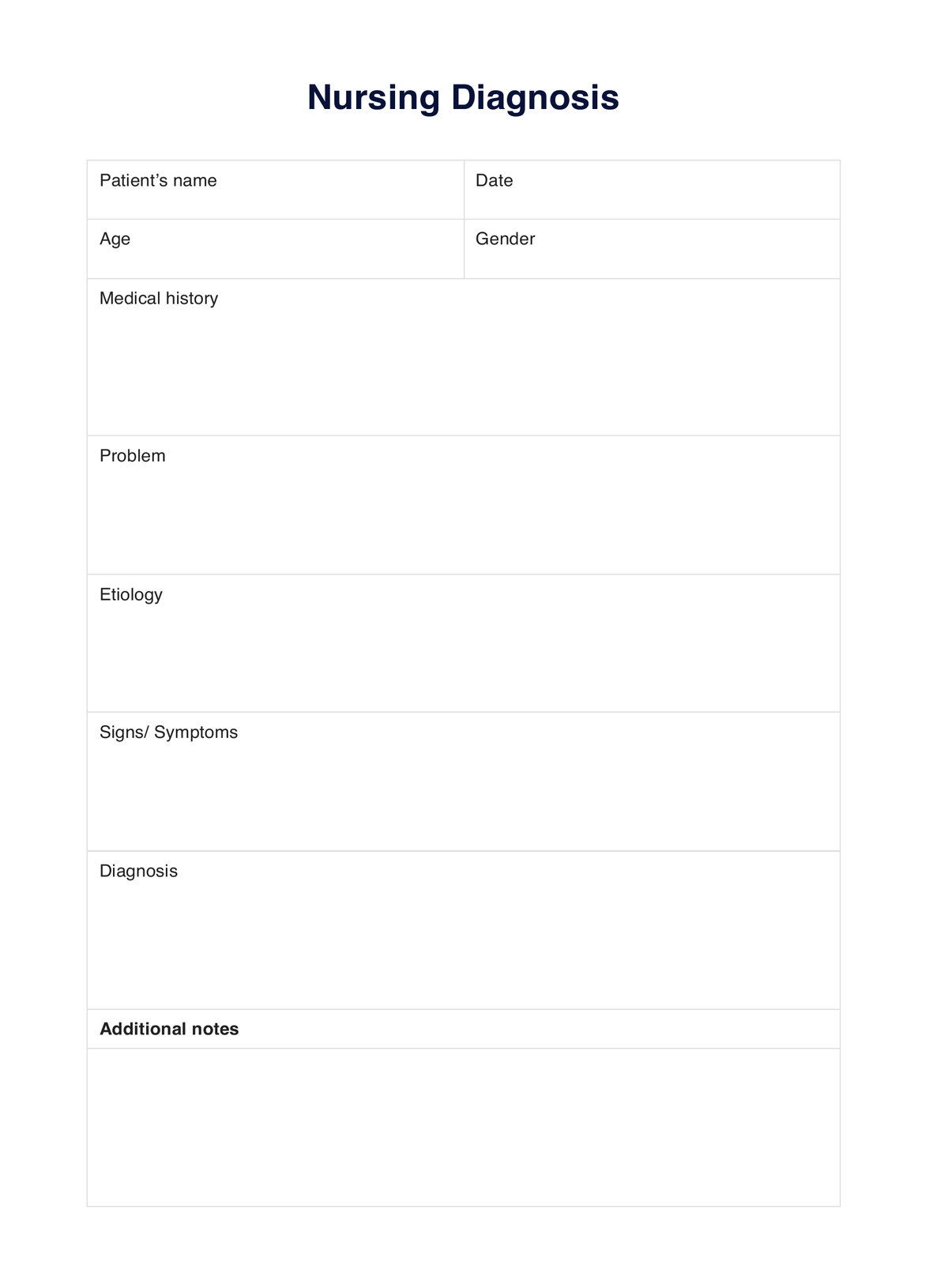Nurses typically use Nursing Diagnosis Templates during the assessment phase of the nursing process, which involves collecting and analyzing data about a patient's health status. This helps nurses identify potential problems and develop appropriate care plans.

Nursing Diagnosis
Access a free Nursing Diagnosis Template and explore how to document patient information for adequate care and treatment.
Use Template
Nursing Diagnosis Template
Commonly asked questions
Using a Nursing Diagnosis Template makes it easier for nurses to systematically assess and document patient information, leading to more accurate and comprehensive care plans. It also promotes consistency and communication among healthcare team members, ultimately improving collaboration and patient outcomes.
Yes, Carepatron's Nursing Diagnosis Template
EHR and practice management software
Get started for free
*No credit card required
Free
$0/usd
Unlimited clients
Telehealth
1GB of storage
Client portal text
Automated billing and online payments











